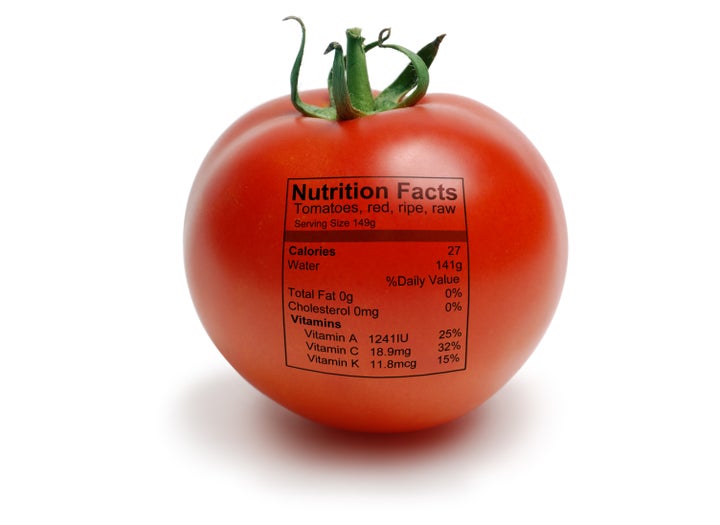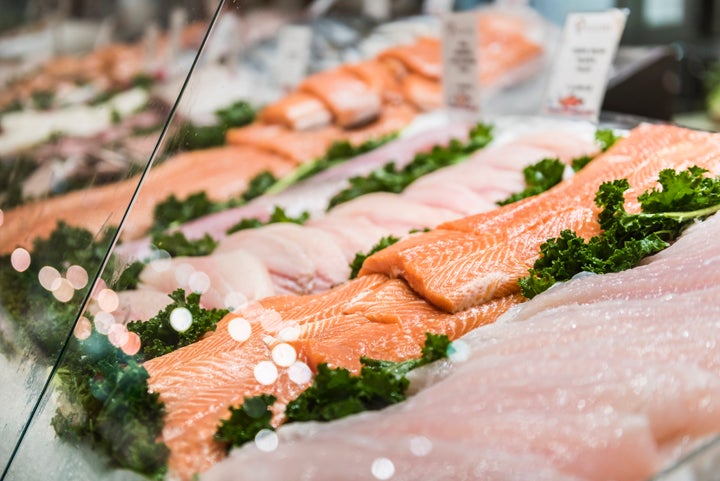Looking for foods that are organic or gluten-free? What we see may not always be what we get at the grocery store.
More than half of Americans find food labels misleading or confusing, and sometimes for good reason. Even when we carefully check labels for nutrition, fat, sugar, sodium, total calories or specialty claims like organic and gluten-free, what we see may not always be what we get.
Mislabeling, also called misbranding, is all too common. At times, false labels are due to outright food fraud — such as the nearly one-third of fish that is mislabeled every year, according to research by nonprofit foundation Oceana. (Often times, inexpensive types of fish are labeled as more expensive fish, tricking consumers into spending far more money.) In other cases, the labels are due to manufacturer error — such as putting a gluten-free claim on a product containing barley. And finally, labels can sometimes be outright confusing, since the way the FDA defines a serving size or a sugar may not be the way we intuitively understand it.
Confusion is about to increase, now that the “nutrition facts” part of food labels is changing for the first time since 1994. Large manufacturers (with more than $10 million in annual sales) rolled out their new labels this past January; smaller manufacturers will comply by January 2021. Serving sizes are now larger to reflect the fact we eat larger portions than we once did; the daily recommended limit for sodium drops from 2,400 to 2,300 milligrams, and vitamin D and potassium levels must be included, among other changes.
The good news is that “consumers can protect themselves,” according to Rosalee Hellberg, a food scientist at Chapman University in California. “They can teach themselves to read labels properly, and learn how to protect themselves from food fraud. There are simple pointers that anyone can learn.”
Here are some common examples of mislabeling and guidelines for ensuring the foods you buy are what you think they are.

Counterfeits
Both honey and olive oil have been adulterated and then falsely labeled. Honey has been diluted with corn syrup or sugar, while olive oil can be mixed with cheaper oils and, in some cases, food coloring is added to give the green hue of oils rich in phytonutrients.
Fruit juices are sometimes fakes, as well, watered down or diluted with cheap apple or grape juice. Orange juice might actually contain lemon or grapefruit juice as well as high fructose corn syrup or other sugars.
You can protect yourself from counterfeits, Hellberg told HuffPost, by “becoming familiar with your favorite foods and beverages. Know the typical prices for those products, and what the label looks like.” If the taste changes, or the label looks a bit different, she said that should alert you to a possible problem. An up-to-date list of counterfeits around the world can be found here.
Country Of Origin Fraud
Cheap substitutes have sometimes been labeled as far more expensive prized regional products—like expensive wines, rich Kona coffee beans or Modena balsamic vinegar. In addition, companies may use coy labeling without making outright claims, such as calling potato chips made in the state of Washington “Hawaiian,” which triggered a lawsuit by annoyed consumers.
Protect yourself by purchasing products from well-known, reputable companies that prioritize safety and quality, Hellberg advised. “Many companies have well-thought-out plans to verify and inspect ingredients from suppliers to be sure they are genuine,” she explained. And don’t necessarily be seduced by a sexy or appealing product name or picture.
Gluten-Free Foods That Contain Gluten
In 2017, dietitian Tricia Thompson, founder of Gluten Free Watchdog, spearheaded a citizen’s petition to the FDA asking for increased surveillance, investigation and enforcement of gluten-free misbranding violations. In the last three years, she said, consumers have reported dozens of products labeled gluten-free that actually contain gluten; a continually updated list is available here.
Everything from lentils to cookie dough to smoked salmon chowder violated the standards. The good news, Thompson said, is that six of eight misbranded products she reported to the FDA in 2020 have been recalled.
“The FDA has taken action recently,” she noted. And that, she said, “is a very big deal.” The bad news, she said, is that “no action has been taken by the FDA against malt or hydrolyzed wheat protein in soy sauce.” Malt can be derived from barley, a gluten-containing grain. In response, FDA spokesperson Nathan Arnold referred HuffPost to the administration’s official statement and noted that the FDA’s first response to a violation is to work with companies toward a voluntary recall, such as this one.
To protect yourself, familiarize yourself with the actual rules and regulations. Know that malt can often be barley malt, and that soy sauce can often be derived from wheat. Read labels rather than accept claims. Follow consumer advocacy sites like Gluten Free Watchdog to remain up to date, and be aware that the safest products are those whole grains and beans you inspect yourself.
Mislabeled Fish
Unfortunately, it’s still common for fish and seafood to be mislabeled, with cheap or farmed brands passed off as more succulent or wild-caught varieties.

Asian pangasius (or ponga) may be labeled sole or flounder or grouper, and farmed salmon may be sold as “wild-caught.” Since over 90% of seafood we eat here in the U.S. is imported, it can be hard to know what you’re getting.
Consumers should ask questions at the fish store, including where, when and how the fish was caught. If the price seems too good to be true, beware, Hellberg said. And whenever possible, she said to purchase a whole fish or purchase local seafood, not seafood that has traveled through several countries on its way to your plate.
Confusing Labels That May Unintentionally Mislead
In 2016, the FDA published new rules for nutrition facts labels for packaged foods. As mentioned, manufacturers with $10 million or more in annual sales switched by Jan. 1, 2020 ― manufacturers with less than $10 million in annual food sales have until Jan. 1, 2021, to comply.
The labels can be confusing to consumers, however. “In some cases, there’s a disconnect between FDA rules of the road and what consumers expect,” explained compliance specialist Debra Topham, who specializes in reviewing food, beverage, meat, poultry and supplement labels for compliance to FDA, FTC and USDA regulations. For instance, because labels now need to show total sugars, manufacturers may reduce sugar and add in sweeteners with few or no calories, such as stevia, erythitol or allulose. At first glance this might seem like a healthy step, but research has shown that intensely sweet sugar substitutes are not always healthy; they can overstimulate your taste receptors and actually increase sweets cravings.
To help read labels better, understand that a food that boasts “no sugar added” can still have a lot of sugar naturally present, such as a fruit juice. Also keep in mind that a food labeled “reduced sugar” needs to have 25% less than a “regular” version of the same food. Neither label necessarily means a food is low in sugar, however. So make sure to look for all sugars present, whether natural or added.
Similarly, a low-sodium claim doesn’t mean no sodium—look at how much a serving size is on the label. A can of beans might contain two or three servings, and the sodium can add up if you eat the contents of the entire can.
Be aware of how a serving size is defined. In some cases, Topham said, the way the FDA defines a serving size is changing. “A serving for carbonated beverages and flavored waters is now 240 milliliters, but is going up to 360 milliliters.” That, she said, is more in line with actual consumer behavior. To help you navigate the confusion over new labeling, Harvard Health has provided an explanation.
Overall, Topham said, go back to basics. “The simplest thing is to make wise dietary choices. Look for lower-sodium and lower-fat foods when you have the option. Work with a nutritionist to help you learn what’s appropriate for you to eat,” she said. Healthier products are in store in the future, as the FDA plans to work with manufacturers over the next five to 10 years to help the food industry move to lower sodium levels. “We can’t do it all of a sudden,” Topham said, “as it would shock the consumer’s palate.”
But even now, she said, everybody can make healthy, common sense choices.
Credit: Source link